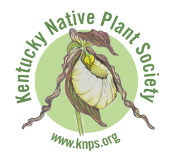By Susan Harkins
Growing new native wildflowers from seed is inexpensive and satisfying if you really enjoy the hands-on approach. In Kentucky, most native wildflowers require some form of preparation, such as stratification or scarification. In this article, you’ll learn how to stratify your seeds, because it is the most common method required by Kentucky natives.
Stratification, defined simply, is the act of creating layers. For our purposes, stratification is the process of breaking down a seed’s outer protection so it can germinate. Nature does a great job of this. When seeds drop to the ground, they overwinter in the cold, moist soil. The constant change in temperature and moisture works to grind or dissolve the outer covering. By spring, many of these seeds are ready for the warm spring weather and germination. Many Kentucky natives will reseed year after year without any human intervention.
If you want more control, you can collect seeds and force the germination in flats, pots, and even milk jugs. But for most of the native seeds you collect, you can’t wait until spring to sow them — they won’t germinate until the next year, if at all.
Continue reading Preparing wildflower seeds using the stratification method





